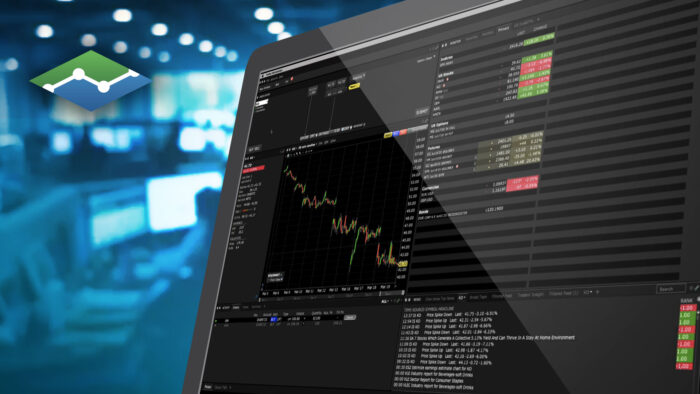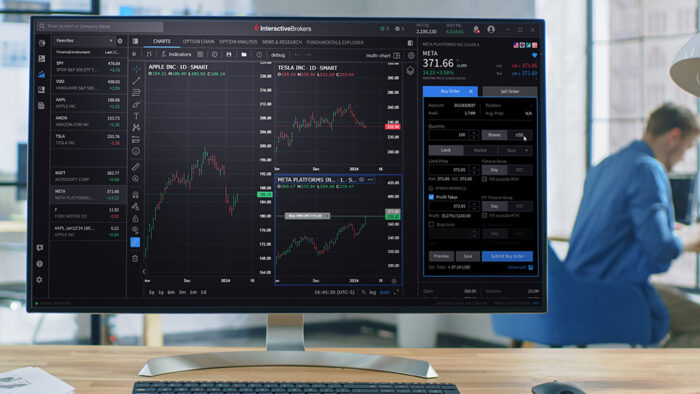Study Notes:
Intrinsic value is a measure of what a stock is worth, independent of its current market price. It represents the perceived true value of the stock based on an analysis of its financial data, prospects, and other factors that can influence its price.
The goal of calculating intrinsic value is to determine if a stock is overvalued or undervalued by comparing its intrinsic value to its current market price. A stock trading at a price below its intrinsic value is considered to be undervalued. A stock trading at a price above its intrinsic value may be overvalued.
As in most things, calculating intrinsic value can be complex. It requires a thorough analysis of a company’s financial statements, competitive position, management team, and other relevant factors. Essentially, investors need to estimate how much cash the company will generate in the future.
Once future cash flows have been estimated, they are discounted back to their present value using a discount rate that reflects the time value of money and the risk associated with the investment.
This discount rate is typically based on the investor’s required rate of return, which will vary depending on factors such as the investor’s risk tolerance and the opportunity cost of investing in other assets.
To calculate the intrinsic value of a stock, there are various valuation models, two popular ones are the Discounted Cash Flow (DCF) model and the Dividend Discount Model (DDM). Each model has its pros and cons and may be more suitable for specific types of companies or industries.
Intrinsic value is a subjective metric that depends on the valuation model and given assumptions.
Discounted Cash Flow (DCF) Model
This model estimates the intrinsic value of a stock by calculating the present value of its expected future cash flows. It involves projecting future cash flows and discounting them back to their present value using a discount rate. The main advantage of the DCF model is that it considers the time value of money and applies to any company with positive cash flows. However, it relies heavily on assumptions and can be sensitive to changes in the discount rate and growth rate.
Example using Company XYZ – Stock Price is $52:
Intrinsic Value = Σ (CFt / (1 + r) t)
Where:
• CFt represents the expected cash flow in year t
• r represents the discount rate
• Σ represents the summation of all projected cash flows
Let’s assume the following projected cash flows for XYZ over the next five years:
Year 1: $10
Year 2: $12
Year 3: $15
Year 4: $18
Year 5: $20
Assuming a discount rate of 10%, the intrinsic value can be calculated as follows:
Intrinsic Value = (10 / (1 + 0.10)^1) + (12 / (1 + 0.10)^2) + (15 / (1 + 0.10)^3) + (18 / (1 + 0.10)^4) + (20 / (1 + 0.10)^5)
Intrinsic Value = $9.09 + $9.92 + $11.29 + $12.66 + $13.54 = $56.50
According to the DCF method, the estimated intrinsic value of XYZ stock would be approximately $56.50.
Since XYZ’s current stock price is $52.00, this suggests that if the intrinsic value represents the true worth of the stock, it is potentially undervalued and may present an investment opportunity.
Dividend Discount Model (DDM)
This model estimates the intrinsic value of a stock by calculating the present value of its expected future dividends. The DDM is most suitable for stable, dividend-paying companies but may not be appropriate for companies that do not pay dividends or have unstable dividend payments.
Intrinsic Value = D1 / (r – g)
Where:
• D1 represents the expected dividend in the next period
• r represents the required rate of return
• g represents the expected dividend growth rate
Example using ABC:
Assuming an expected dividend of $2.50, a required rate of return of 8%, and a dividend growth rate of 5%, the intrinsic value can be calculated as follows:
Given the following values:
Expected dividend (D1) = $2.50
Required rate of return (r) = 8% or 0.08
Dividend growth rate (g) = 5% or 0.05
Intrinsic Value = $2.50 / (0.08 – 0.05)
= $2.50 / 0.03
= $83.33
According to the Dividend Discount Model, the estimated intrinsic value of ABC stock would be approximately $83.33.
Note – The required rate of return represents the minimum return an investor expects to earn from an investment to compensate for the risk undertaken.
While the risk-free rate may be used as a component in determining the required rate of return, it is not the only factor. The required rate of return incorporates the risk associated with the specific investment being evaluated.
The required rate of return typically considers factors such as the risk-free rate, market risk premium, and the specific risks associated with the investment (e.g., volatility, industry-specific risks, company-specific risks).
We could adjust the required rate of return to 7% and would receive this result:
Given the following values:
Expected dividend (D1) = $2.50
Required rate of return (r) = 7% or 0.07
Dividend growth rate (g) = 5% or 0.05
Intrinsic Value = D1 / (r – g)
= $2.50 / (0.07 – 0.05)
= $2.50 / 0.02
= $125
Therefore, using the Dividend Discount Model with an expected dividend of $2.50, a required rate of return of 7%, and a dividend growth rate of 5%, the intrinsic value is calculated to be $125.
Please note that these examples are for illustrative purposes only, and actual intrinsic value calculations require careful analysis, accurate projections, and consideration of other factors specific to the company and industry.
Overall, estimating intrinsic value requires a detailed analysis of a company’s financial and competitive position, as well as an understanding of macroeconomic factors that could impact its future performance. While it can be a complex and subjective process, it can be a major tool for investors who want to make informed investment decisions based on the underlying value of a company.
EPS based Intrinsic Value
Now, let use a formula that incorporates the trailing twelve months (TTM) earnings per share (EPS). One commonly used formula is the Price-to-Earnings (P/E) ratio approach to estimate intrinsic value. The formula is as follows:
Intrinsic Value = EPS TTM x P/E Ratio
The P/E ratio represents the price investors are willing to pay for each dollar of earnings generated by the company. By multiplying the EPS TTM by the P/E ratio, you can estimate the intrinsic value of a stock.
Example using XYZ:
Let’s assume that the EPS TTM for XYZ is $5.50 and the average P/E ratio for the industry is 20.
Intrinsic Value = $5.50 x 20
According to this formula, the estimated intrinsic value of XYZ stock using the EPS TTM and a P/E ratio of 20 would be $110.
Different investors may use different P/E ratios based on their valuation methodologies and perspectives.
This in best of cases results in wide uncertainty bands around all of these estimates. So many investors choose to use relative valuations instead, comparing stocks to similar stocks based on price/earnings, growth rates, price/book, price/revenue and so on.
These numbers tell part of the story, investors still need to study the company in detail both quantitively and qualitatively.










